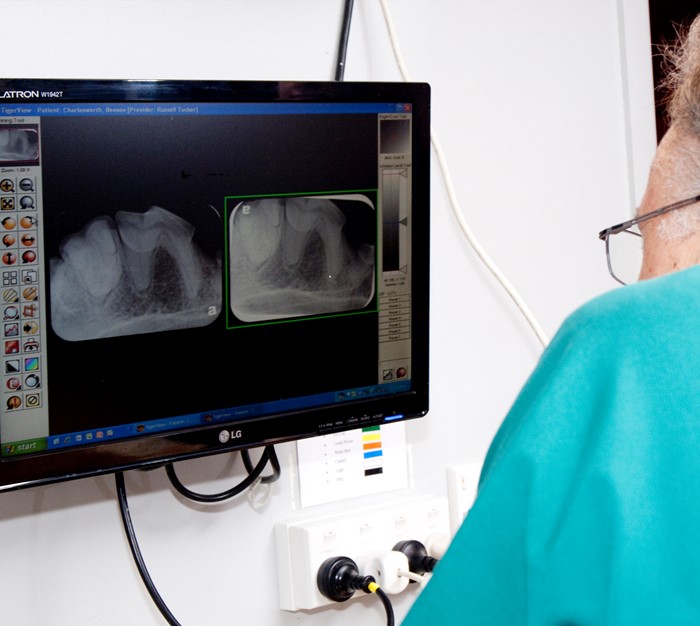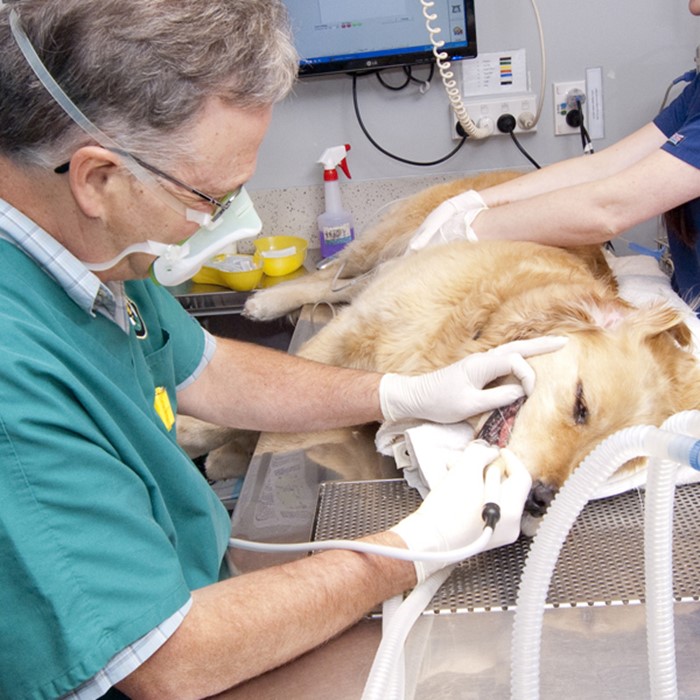WHAT TO EXPECT
BE PREPARED FOR YOUR VISIT
DENTAL EXAMINATIONS
Initial examinations by Dr Tucker should be booked for mornings and usually take approximately 30 minutes. If you are travelling from outside of Auckland, we will endeavour to schedule any dental surgery that is needed for the same day as your consultation.
Dr Tucker will examine your pet, discuss any concerns that you may have and discuss a plan for the course of required treatment. If you need to cancel or postpone your appointment, please let us know with at least 48 hours notice.
On the day of your pet's dental procedure, it is important that you arrive at the clinic with your pet between 8am and 9am. Consultations and re-check appointments can be booked in the morning before surgery and in the late afternoon between 4pm and 6pm.


WHAT TO BRING
• The practice and name of your usual veterinarian
• Any recent medical records including recent laboratory tests
• Details of any medications that your pet may be receiving
Please note: We are able to give accurate estimates of cost for your pet's treatment. It is important that on the day of treatment, we are able to contact you if x-rays should reveal any additional treatment that is necessary.
If this is your first appointment with us, you will be asked to complete a registration form. You can use the online form, or download the PDF and either bring it with you, or email it to us at; reception@aucklandvetdentist.co.nz
Dr Tucker will communicate with your referring veterinarian regarding your pet's procedure. Your pet will require a general anaesthetic. Lab work is an important part of a pre-anaesthetic evaluation. We require a pre-anaesthetic blood panel as well as a complete blood count (C.B.C.) which can be done by your usual veterinarian, or by us on the day of the procedure.
THE DAY OF SURGERY
It is vital that we are able to contact you. We may need to discuss any additional findings during your pet's procedure, for which we will require your consent to proceed with any additional surgery that may be necessary.
PRE SURGICAL INSTRUCTIONS
It is likely that for your pet's dental procedure, they will require a general anaesthetic. Therefore, please withhold your pet's food after 8pm the evening before your appointment and take away any water first thing on the morning of the procedure.
If your pet is diabetic or has a kidney problem, please call the clinic for specific fasting instructions. Any regular medications should be continued unless otherwise advised.
If you have any concerns please phone us
CALL 09 521 1457


ANAESTHESIA
There is always an element of risk associated with an anaesthetic. To help prevent any complications, we recommend pre-anaesthetic blood testing which can be done prior, by your own veterinarian, or by us on the morning of your pet's dentistry. We have comprehensive facilities on-site to analyse blood samples.
Each patient undergoing an anaesthetic receives a thorough physical examination after which pre-anaesthetic medications are given including drugs for sedation and pain control. All patients have an intravenous catheter inserted during anaesthesia to enable administration of fluids.
During anaesthesia, a nurse continuously monitors your pet's blood pressure, heart rate, blood oxygenation, respiration and temperature. Body temperature is maintained using warm water blankets and fluids.
If managed correctly and efficiently, anaesthetic risks are minimal.
Most patients will recover from anaesthesia within minutes of completion of the procedure and patients are discharged from the clinic generally on the same day between 4pm and 6pm. A specific discharge time may be given to you on the day.
WHY WE NEED TO USE ANESTHESIA
• A thorough examination and cleaning can’t be done on a cat or dog whilst they are awake. Most oral disease occurs below your pets gum line and dental radiographs are the only way to diagnose painful dental disease.
• Anesthesia free dental care requires animal restrain whilst having their teeth scaled. This is both stressful and painful for them. Without proper sub-gingival scaling.
• Periodontal disease rapidly develops to eventually needing multiple extractions and extensive treatment.


IMPORTANCE OF DENTAL RADIOGRAPHS
Most of the dental anatomy lies below the gum line making x-rays a vital diagnostic tool in dental disease.
X-rays help in diagnosis and treatment plans and in assessing treatment success. X-rays can also identify problems with the crowns of teeth and tissues of the jaw, as well as the nasal cavity.
You can find out more information from the AVDC website.